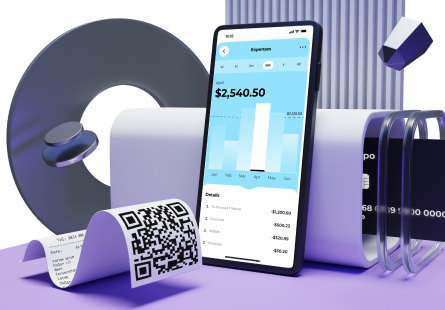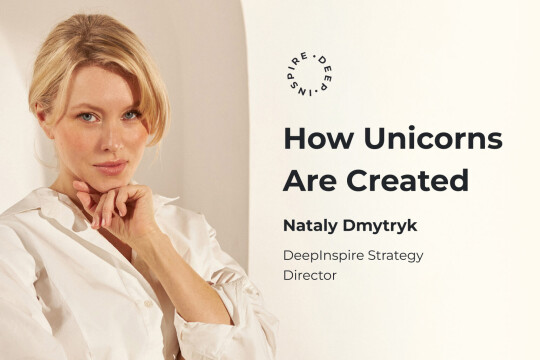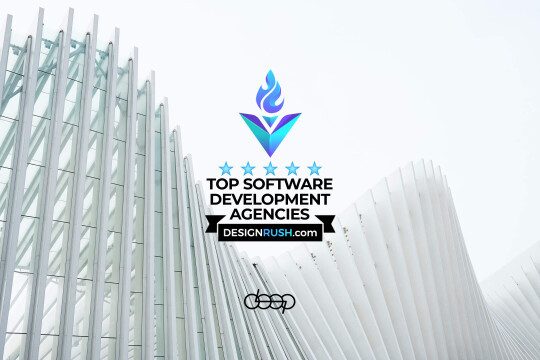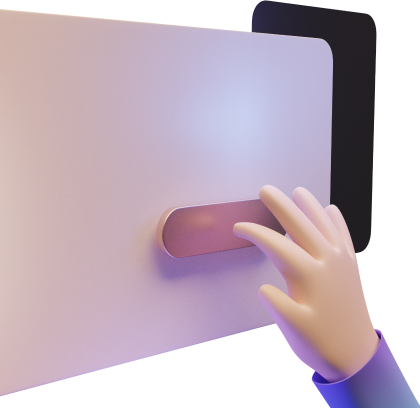Crafting an amazing product is like setting off on an exciting journey, and the very first step involves figuring out what that product should be. We call this part the product discovery phase, and it holds a special place in the process. It’s like sketching a roadmap before embarking on an adventure. This phase isn’t just about finding a good idea; it’s about ensuring the product is something people want and aligns with the company’s goals.
In this article, we’ll delve into seven key actions you need to take to ensure your product discovery journey is a success. Think of it as a guidebook for creating a product that not only delights customers but also contributes to business growth. So, let’s dive into these key components and make your product adventure a success!
1. Cross-functional team collaboration: teaming up for success
To make a great product, you need a diverse team with different skills. This team usually includes a product manager, designer, lead developer or solution architect, and business analyst. They all work together to make sure the product meets business goals and is technically doable. Teamwork is key here because everyone brings something special to the table, making sure the product is well-thought-out and covers all bases.
The product manager steers the ship, setting the product vision, defining goals, and ensuring alignment with business objectives. They prioritise features, manage timelines, and act as a crucial link between stakeholders and the development team. Designer makes the product visually appealing and user-friendly. Focusing on UI and UX design, they bring creativity to the table, ensuring the product not only looks good but is also intuitive and meets user expectations. Developers are the builders, turning ideas into software, ensuring it operates smoothly and meets the technical requirements outlined in the project. Business analyst bridges the gap between technical and business aspects. They analyse data, gather requirements, and ensure the development aligns with the overall business strategy. Acting as interpreters, they play a key role in meeting both technical specifications and business needs.
Effective collaboration thrives on continuous communication. Regular check-ins, brainstorming sessions, and open discussions create a flow of information that is vital for success. This communication isn’t just about relaying updates; it’s about fostering a culture of openness where every team member feels heard and valued. Transparent communication cultivates an environment where ideas flow freely and insights from all corners are considered.
2. Problem statement: finding the right problem to solve
Think of the problem statement as the main guide for the team. It’s like the North Star that keeps everyone on the right track. This statement is super important because it tells the team exactly what problem they’re trying to solve. With a clear problem statement, the team can avoid going off track and stay focused on the main goal. It’s the starting point that sets up the team for success in building the product.
Also, the problem statement isn’t a boring old rule; it’s more like a friend that grows with us. As the team dives deeper into figuring things out, the problem statement comes along for the ride. It becomes a helper during brainstorming sessions, making sure we’re on the right track and testing if our ideas match up with what the users really need. While we explore different ideas, the problem statement is there, reminding us of the problems users face and the good stuff we can create to help them. It’s not just a starting point; it’s like a story unfolding, guiding us through the adventure of making things better.
3. User research: understanding users, unveiling insights
Understanding who will use the product is really, really important. This phase involves more than scratching the surface. Through interviews, surveys, and observational studies, the team delves deep into the intricacies of user behaviour. It’s about uncovering the “why” behind user actions, going beyond demographics to understand the context and emotions that shape user experiences. This in-depth understanding becomes the foundation of the entire product concept.
User research is not a one-time affair; it’s a continuous conversation. The feedback gathered becomes a dynamic force, fueling iterative cycles of improvement. Prototypes are not just tested for functionality; they are immersed in real-world scenarios to observe user reactions. This iterative loop ensures that the product evolves in tandem with user expectations, refining and adapting to meet the ever-changing landscape of user needs.
User research goes beyond creating generic user personas; it crafts holistic user profiles. These profiles are not just collections of data points; they are living, breathing representations of real individuals. The team crafts narratives that depict the daily lives, aspirations, and challenges of these users. This approach ensures that the product is not designed for a faceless audience but for real people with distinct stories.
4. Ideation and prioritisation: sparking creativity and picking the best ideas
Ideation is just a fancy word for brainstorming, where the team comes up with lots of ideas. The ideation process involves both divergent and convergent thinking. Divergent thinking is the expansive phase where the team generates a multitude of ideas. It’s about quantity and variety, allowing creativity to bloom without constraints. Convergent thinking follows, where the team sifts through the ideas, selecting the gems that align with the vision and goals. It’s the balance between letting creativity soar and then channelling it into a focused direction.
But you can’t do everything at once, so after brainstorming, the team needs to pick the best ideas. This is where prioritisation comes in. Using simple methods like ICE (Impact, Confidence, Ease) helps the team choose the best ideas to work on first. Impact measures how much the idea can change the game. Confidence gauges how sure we are about the idea’s success. Ease considers how straightforward it is to bring the idea to life. This framework guides us in making strategic decisions, helping us pick ideas that not only sound cool but also make sense for the business and users.
Prioritisation is not just about choosing what seems exciting; it’s about aligning ideas with overarching business goals. The selected ideas should not only have the potential to create a buzz but also contribute meaningfully to the success of the product.
5. Prototyping and validation: bringing ideas to life
Prototyping is like a sneak peek into the future. It’s the stage where the team transforms abstract concepts into tangible representations. Imagine it as creating a rough draft before writing the final manuscript. Low-fidelity prototypes, whether they’re sketches, wireframes, or clickable models, serve as the first draft of our product. This visual manifestation allows the team and stakeholders to see, touch, and interact with the idea, uncovering potential challenges and refining the vision before investing heavily in development.
Prototyping is not a one-time affair; it’s a dynamic, iterative process. It’s about putting the prototype in front of users, gathering feedback, and then going back to the drawing board for improvements. This rapid cycle of iteration is where the magic happens. It’s not just refining the product; it’s honing the user experience, addressing pain points, and enhancing features based on real-world insights. The prototype becomes a living, breathing entity that evolves and improves with each iteration.
Validation is the next step, and it’s all about making sure your idea is on the right track. By trying things out and getting feedback from real users, teams can see if their solution actually solves the problem they set out to tackle. This step is not about seeking validation for the team’s efforts; it’s about ensuring that the product genuinely meets user needs and expectations.
User validation is not just a checkbox; it’s an invaluable learning opportunity. The feedback received during this phase becomes a treasure trove of insights. Users may uncover aspects the team hadn’t considered, providing a fresh perspective that guides further refinements. It’s a collaborative dialogue between the team and users, with each interaction shaping the product’s trajectory.
6. Documentation: keeping track of what we learn
Documentation in product discovery is the silent force that transforms ideas into tangible product. It acts as a comprehensive archive, capturing every decision and insight. This repository facilitates knowledge transfer, ensuring that the team’s collective wisdom persists through changes in personnel or priorities.
Beyond being a historical record, documentation captures learnings, both successes and challenges. These insights become a guide for future iterations, preventing the repetition of past mistakes. Communication is vital in product development, and documentation acts as a catalyst. It provides a common language for the team, stakeholders, and collaborators, ensuring everyone is on the same page.
In essence, documentation structures the chaos of brainstorming, interviews, and experiments. It’s not just about writing things down; it’s about creating a story – a narrative of challenges overcome, ideas evolved, and a product brought to life.
7. Effective stakeholder involvement: teamwork makes the dream work
Getting everyone involved early and keeping them in the loop is crucial for success. Stakeholders aren’t just watching; they’re part of the action. Actively seek their thoughts and use their feedback to improve the product. It’s a back-and-forth process that makes sure the product is a mix of everyone’s ideas. Stakeholders are like a business compass. Make sure that product discovery aligns with what the business wants to achieve. Their strategic insights will guide you in making decisions that make sense for everyone.
Remember this – a product journey isn’t a straight line; it’s a loop of continuous improvement. Keep going back to stakeholders for feedback, making it an ongoing conversation. This ensures that their thoughts are always considered.
Keeping everyone on the same page is crucial. Communicate clearly about what you’re trying to do, what challenges you might face, and what you hope to achieve. This honesty helps everyone understand what to expect.
Final thoughts
So, to sum it up, using these seven important components of product discovery can really help you create something awesome. From figuring out what people need to working together as a team and making changes based on what people say, each step is like a piece of the puzzle. It helps you make a product that people will love, and that fits your company’s goals.
Understanding user needs isn’t just about ticking a box; it’s about empathy and connection. It’s about putting ourselves in the shoes of the people who will interact with our creation, anticipating their desires, and addressing their pain points. Fostering collaboration isn’t merely a procedural step; it’s about cultivating a creative ecosystem where diverse minds converge, sparking innovative ideas that transcend individual perspectives. It’s the collective brilliance that propels the product forward.
Iterating based on feedback isn’t a mechanical process; it’s an ongoing conversation with users and stakeholders. It’s about actively listening to what they have to say, embracing the lessons from both successes and failures, and evolving the product in real-time. It’s a commitment to a journey of continuous improvement, where each step forward is a step towards a more refined, user-centric, and impactful product.







